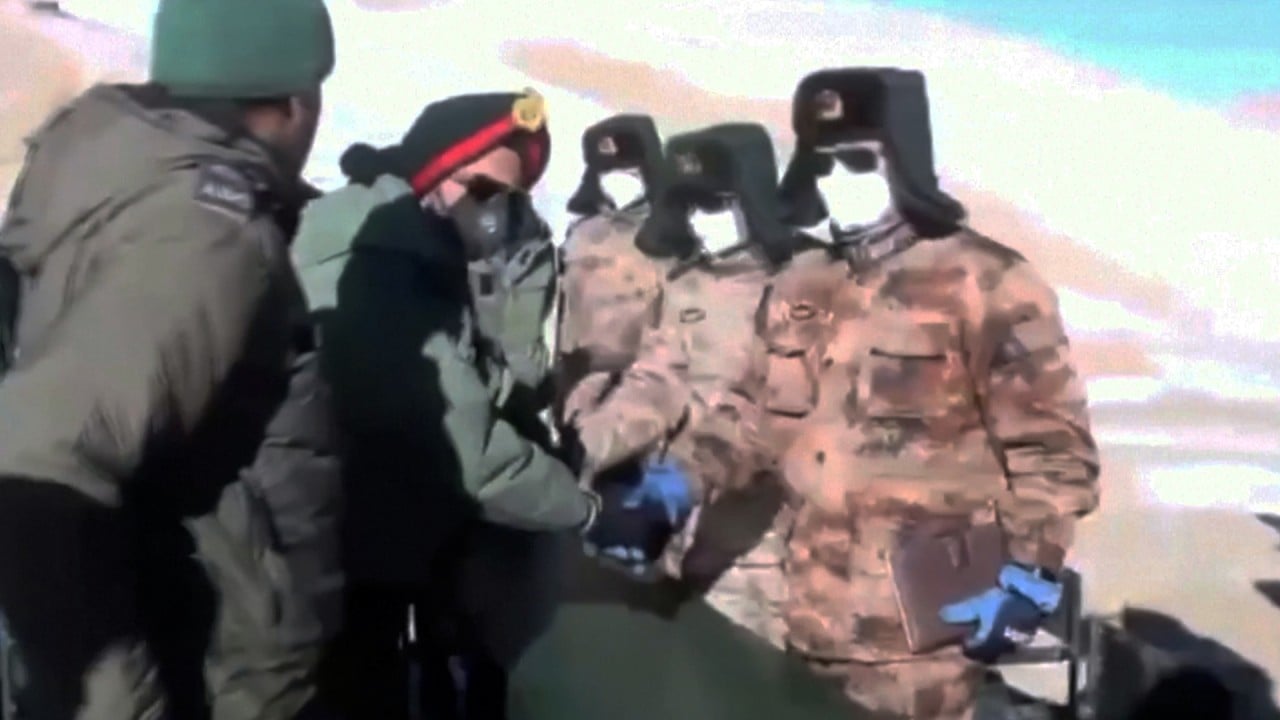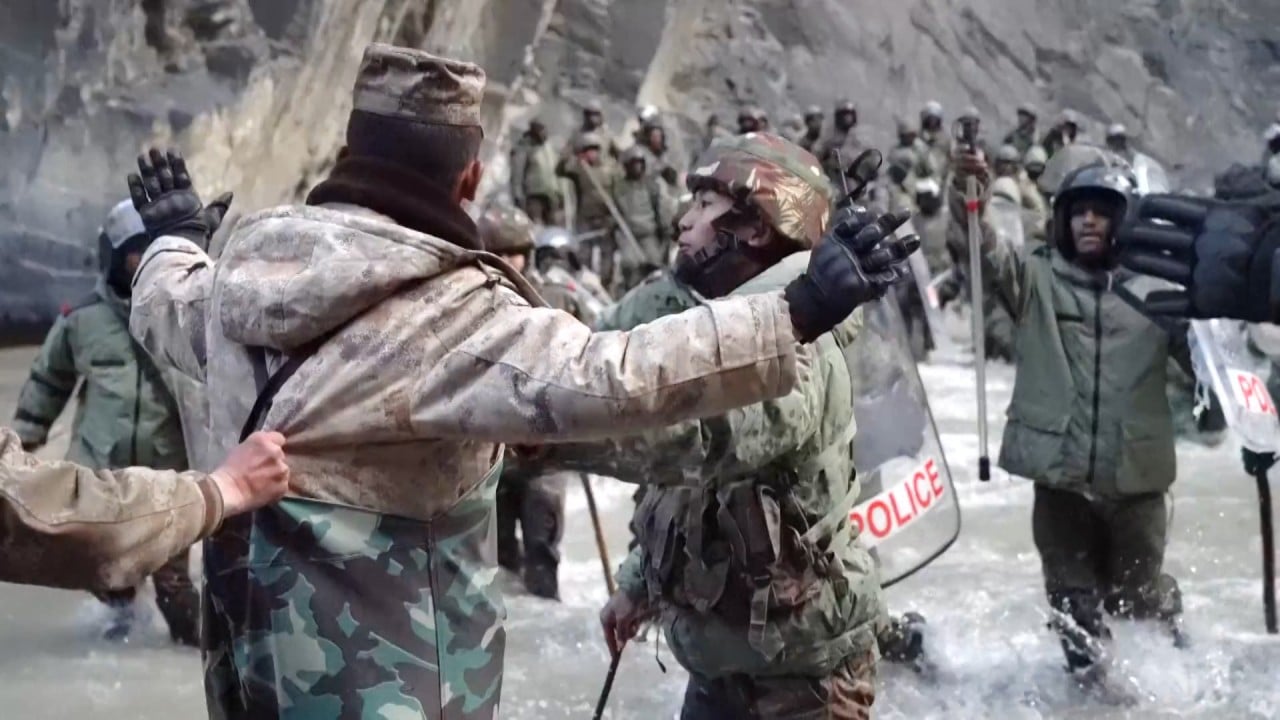
02:07
China reveals details of 2020 border clash with Indian troops after both sides complete pullback

China has called on India to take steps to ease tensions between the two countries, after a report that India sent 50,000 more troops to its disputed borders with China.
Over the past few months, India had moved troops and fighter jet squadrons to three distinct areas along its border with China, Bloomberg reported on Monday, quoting four people familiar with the matter.
India now had roughly 200,000 troops focused on the border, two of the sources were quoted as saying.
The number of troops was an increase of more than 40 per cent from last year and gave Indian commanders more options to attack and seize territory in China if necessary, the report said.
The report came only three days after a meeting between the two countries on border control.
On Monday, Chinese foreign ministry spokesman Wang Wenbin said the border situation was generally stable and the two sides were resolving the issue through talks.
In veiled criticism of India’s fresh deployment, Wang said: “The words and deeds of the two countries should be aiming at cooling the situation and promoting mutual trust, not the reverse.”

02:07
China reveals details of 2020 border clash with Indian troops after both sides complete pullback
In a meeting on Friday, Chinese and Indian foreign ministry officials agreed to “consolidate disengagement results and properly resolve the remaining issues in the western part of the border”, according to China’s foreign ministry.
They also agreed to maintain high-level communication and prepare for a 12th round of talks between military officials.
But India remains sceptical of China’s de-escalation effort, with Indian Foreign Minister Subrahmanyam Jaishankar saying last week that China’s “close-up deployment still continues, especially in Ladakh”.
Soldiers from both countries clashed in the border area of Ladakh last year, resulting in the death of at least 20 Indian soldiers and four Chinese troops.
And on June 17, India’s top army commanders reviewed India’s overall security challenges in eastern Ladakh as well as other sensitive areas along the Line of Actual Control, the disputed border with China.

01:31
China shares video of deadly 2020 border clash with Indian troops in Galwan Valley
At the same time, both countries have rolled out more infrastructure in the region, according to media reports.
The Times of India reported earlier this month that New Delhi was pressing on with infrastructure in the border area, building roads, tunnels and bridges to narrow the gap with China.
On the Chinese side, a new high-speed railway line began operating in Tibet on Friday, taking passengers from the regional capital Lhasa to the eastern city of Nyingchi, close to the border.
But Chinese diplomatic observers said the build-up of infrastructure and extra troop deployments were unlikely to add significantly to the tensions.
Long Xingchun, a South Asian affairs expert and president of the Chengdu Institute of World Affairs, said China’s ability to project power was far greater than India’s and Beijing would not be concerned too much by the developments on the Indian side.
“I don’t think the 50,000 troops will change the power balance in the border area. They did that because their infrastructure and military mobility are both poor, so they need more troops on the front line,” Long said.
“But with good infrastructure and long-distance power projection ability, Beijing can dispatch troops to the front line immediately when needed.”
Song Zhongping, a Hong Kong-based military commentator, said China would not send more troops to counter India’s deployment but it would be ready to respond to emergencies.
“China has stepped up military training and exercises in high-altitude regions, so that Beijing can quickly respond in case contingency happens,” Song said.
Additional reporting by Catherine Wong